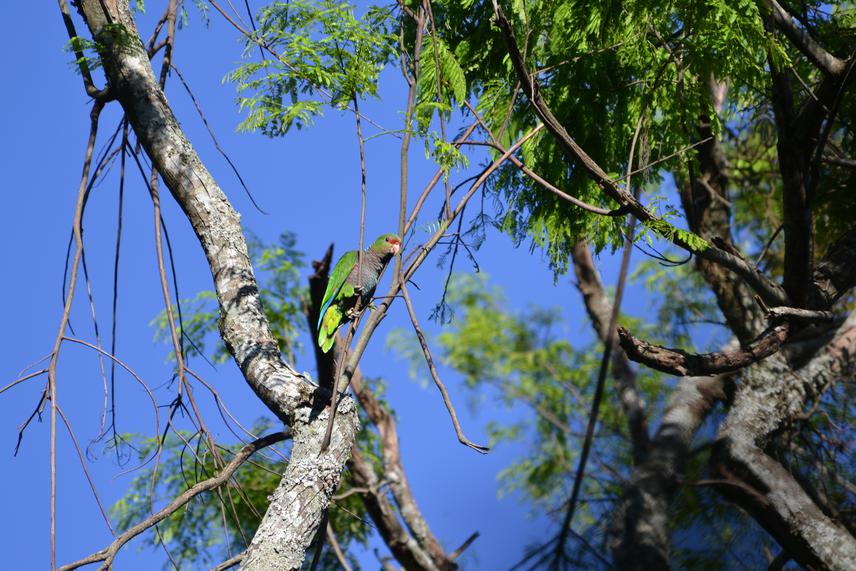Viviane Zulian
Other projects
19 Dec 2018
Monitoring the Endangered Vinaceous Parrot (Amazona vinacea) Population through Field Observation, Observer Networking, and Citizen Science
Produce a Vinaceous Parrot’s population size estimate in a focal area, monitor this population and create a network with local people.

Amazona vinacea.
The Vinaceous Parrot is an endangered species from southern Brazil, Argentina and Paraguay. There is a lack of knowledge about abundance and distribution of this species. The most recent population estimates did in May 2015 turned a remaining population of 3.133 individuals for the whole distribution area. This estimate is a good beginning, but the central problem is that did not include the uncertainty around the estimate – it is an absolute value – what is not comparable across time and space. In this project, we aim to address uncertainty about Vinaceous Parrot population by estimating abundance in one focal area, the western Santa Catarina (SC), Brazil. This region spanning only 3.5% of the reported range of the species but has a considerable abundance – our March count returned approximately 25% (~650 individuals) - and could be a pivotal area for the conservation of the Vinaceous Parrot. The estimates will provide information not just on population size, but also on the most favourable time for counting parrots at roosts, and on the possibility of movement between roosts.
We still aim to improve knowledge about the distribution of this species in western SC, searching and mapping unknowing roost areas to better define priority conservation areas. To optimizing it, we will create a network with landowners, training and involving local observers in project’s activities. The collaboration with local people during our sampling trips will build capacity for locating more roosts and for monitoring into the future. This engagement with local people will stimulate local appreciation for the wild Vinaceous Parrot population, benefiting the local conservation of the species. In the period of the project we will maintain an existing data-sharing website to facilitate the propagation of methodology, compiling information about counts and exchange of data across the species’ range. Progress in WSC will motivate other research groups to join efforts and collect data in a way that allows for estimation of population size with a quantification of uncertainty, contributing for the conservation of the species in a global scale.